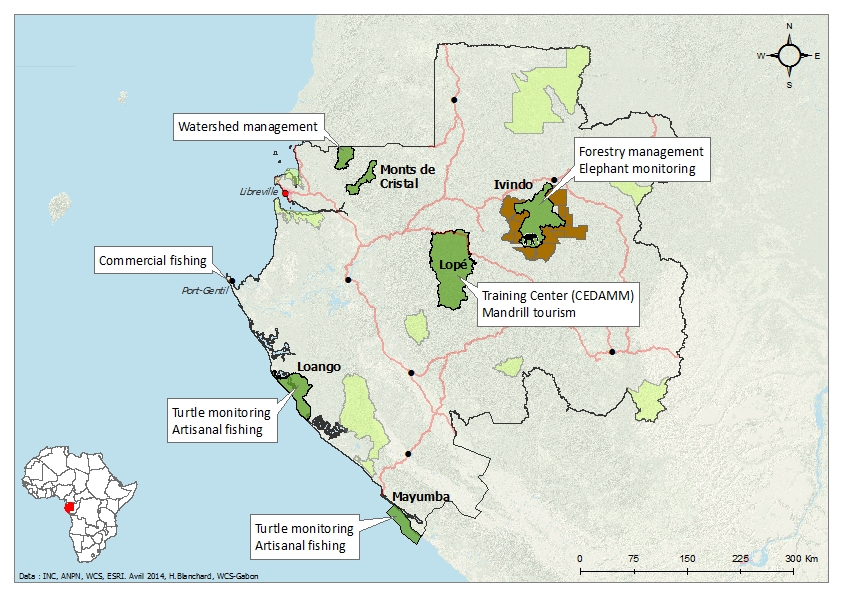Welcome to WCS Gabon
Gabon is a true Eden of Africa, hosting one of the oldest human
settlements on Earth and a full array of iconic African wildlife.
Gabon's forests shelter species such as gorillas, chimpanzees, elephants and mandrills, while its seas are home to humpback whales, leatherback turtles and over 21 species of sharks and rays. Bridging
Gabon’s ocean waters and its pristine forests is one of the most
spectacular and environmentally intact coastlines in the world.
The country
remains a haven for wildlife due to a history of relative isolation and
low human population density, especially on the coast. Today, however,
with threats increasing from industrial development and global trade,
the country needs to find new conservation strategies that will ensure
Gabon remains a haven for spectacular wildlife. Gabon’s national parks,
established in 2002, are now the cornerstones of such conservation
efforts, though much work remains to ensure they continue as a refuge
for wildlife.
Fast Facts
- Up to 50,000 forest elephants inhabit Gabon's vast forests, Gabon is now the last stronghold for forest elephants in central Africa
- The world’s largest population of leatherback sea turtles nest on Gabon’s beaches, a recent study estimating as many as 41,000 breeding females
- Around 800 mandrills in one troop can be observed in Lopé National Park. This is the largest-ever recorded aggregation of primates
- Many of the Congo Basin’s last great tusker elephants survive in Ivindo National Park and can be seen at Langoué Bai
- One of the world’s largest congregations of humpback whales breeds
off Gabon’s coast after migrating from the Southern Ocean. Recent
abundance estimates indicate that there are as many as 10,000 whales in
this population.
Challenges
As Gabon
opens-up to the outside world and diversifies its economy, new roads and
rail networks are bringing an influx of workers into previously remote
regions, causing an alarming rise in poaching, logging, and commercial
trade in wildlife. Similarly, as new sources of minerals, oil and gas
are discovered, the potential for conflict between exploiting these
resources for economic gain and the need to protect sites of incredible
conservation importance is intensifying.
WCS Responds
WCS’s history
in Gabon began in 1985 with the first surveys of forest elephants,
followed by a nationwide conservation priority assessment. These
ground-breaking studies bore remarkable results when WCS helped the
government established its national park system in 2002, encompassing 13
parks and more than 10 percent of the country's total land area.
The new
national park system was partly an outcome of WCS explorer Dr. Mike
Fay's famed "megatransect" through the remote forests of Gabon and
neighboring Republic of Congo. Fay traveled with local assistants for
2,000 miles and 456 days, prompted by concerns that future logging would
deprive the scientific community of what might otherwise be learned
there. Fay's observations helped President Bongo recognize his country's
significant wildlife heritage. Subsequent WCS-led studies have revealed
that Gabon is home to the world’s largest nesting population of
leatherback turtles and the largest remaining population of forest
elephants.
Today, WCS
remains the largest and most influential international conservation NGO
working in Gabon. WCS has increased its commitment to two major
landscapes: Gabon’s coast & ocean, and the forested interior.
WCS is helping build Gabon’s capacity to manage its wildlife and ocean
resources and monitoring the outcomes of conservation activities on
wildlife.

Bienvenue à WCS Gabon
Bienvenue à WCS Gabon